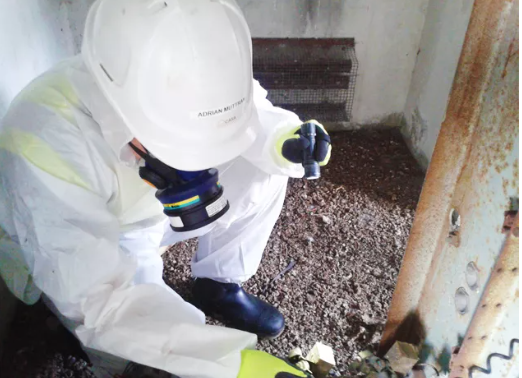When buildings get older, they may hide harmful materials inside walls, floors, or ceilings. One of the most dangerous things hiding there is a substance used in construction many years ago. It was common in insulation, ceiling tiles, and even old floor tiles. People didn’t know then how harmful it could be when touched, broken, or moved. Today, it’s clear how important it is to deal with this problem in the right way. Asbestos abatement and removal help make homes, schools, and offices safer places. This guide will help you understand how the whole process works, why it matters, and what to expect when it’s time to clear it up.
Steps That Come First: Checking and Testing
Before anything gets removed, the first step is always to find out where the risky material is hiding. Experts use special tools to check parts of the building that are most likely to have.
- Site inspection: Certified workers visit the site to look for signs of old materials that could be unsafe.
- Sample collection: Small pieces of the suspect materials are carefully taken for lab testing.
- Lab results: Only trained labs can confirm whether the material is harmful or not.
Once the test results come in, the team decides whether the building needs a full clean-out or another method.
Making the Area Safe Before Work Begins
Preparing the space is just as important as removing the hazard. The team works to stop the harmful dust from spreading through the air.
- Seal off the work zone: They use heavy plastic sheets and special tape to close off doors, vents, and windows.
- Use of machines: Air machines with strong filters help keep the dust from moving into other rooms.
- Warning signs: Clear notices are put up so people know not to enter the work zone.
This setup makes it safer for workers and also protects other areas of the building.
Safety Clothing and Tools Used by Workers
People who work in these areas must stay safe while doing their job. They wear gear made just for this kind of job.
- Protective suits: Full-body suits keep dust off their skin and clothes.
- Masks with filters: These special masks help workers breathe clean air.
- Gloves and boots: Thick gloves and rubber boots add another layer of protection.
After each job, the suits and gear are either cleaned very carefully or thrown away.
Different Ways to Clear the Problem
Not every job is the same. Sometimes materials are left in place but treated so they don’t cause harm.
- Encapsulation: This means spraying a coating over the surface to stop fibers from getting into the air.
- Covering or enclosing: The material may be closed in with drywall or another solid barrier.
- Full removal: When it’s safer to take out the harmful material completely, the team uses wet tools to do it gently.
The choice depends on the type of building and how much of the material is present.
Getting Rid of Hazardous Waste, the Right Way
Once the job is done, everything that was removed must be packed and taken to a special place. It cannot be thrown in regular trash bins.
- Bagging materials: Items are sealed in thick bags or bins that do not leak.
- Labeling: Each bag or bin must be clearly marked.
- Special trucks: The bags are moved using trucks allowed to carry dangerous materials.
These rules are followed strictly to avoid any harm to people or nature.
Final Cleaning and Air Check
Even after the hazard is taken out, the job isn’t finished until the space is clean and safe to use again.
- Wipe and vacuum: Workers clean every surface using wet cloths and vacuum cleaners with strong filters.
- Air testing: Independent testers check if the air is safe to breathe.
- Report and approval: Once everything is clear, a report is given showing the space is clean.
This step gives peace of mind that the place is now safe for daily use.
When Professionals Handle the Job
Trying to remove harmful materials without training is very dangerous. Experts know how to work safely and follow the rules.
- They have the tools and clothing needed.
- They are trained in the best methods.
- They follow local rules and safety codes.
Trusting experts keeps everyone in the building out of harm’s way.
Building a Safe Environment for All
No one wants to find out that the place they live or work in could make them sick. That’s why clearing out harmful materials matters so much. From first checks to final cleanups, the process has many parts, but each one helps protect people.
Asbestos abatement and removal may sound like a big job, but with the right people, it gets done right. Safety should never wait, and dealing with these hazards early is the best way to protect health.
Want help making your property safe? Contact MSN Enviornmental now and speak with trained professionals who can handle it step-by-step.


